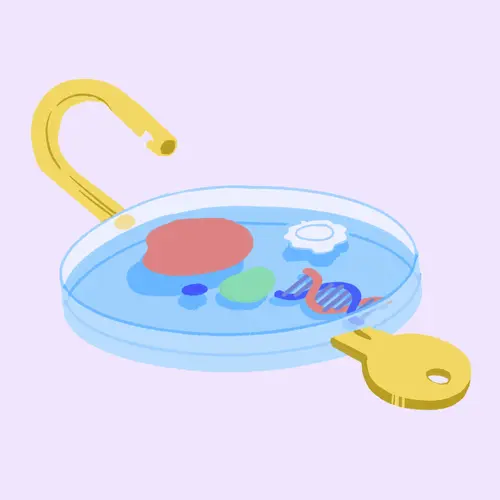Gustatory rhinitis is the medical term for a runny nose or sneezing you may get after you eat hot or spicy foods. It's a type of nonallergic rhinitis, where your nose gets inflammation but not because of an allergy.
Symptoms of Gustatory Rhinitis
Gustatory rhinitis can cause several irritating symptoms after you eat including:
- Sneezing
- Stuffy nose
- Runny nose
- Postnasal drip — the feeling that mucus is dripping down the back of your throat
What Is Snatiation?
Snatiation is a related reaction that isn't well studied. The name is a portmanteau word. It's a combination of the words sneezing and satiation. It's also an acronym for “Sneezing Non-controllably At a Time of Indulgence - A Trait Inherited and Ordained to be Named”.
Scientists will go a long way out of their way for a funny acronym. Snatiation was first named in a tongue-in-cheek letter in the Journal of Medical Genetics. It appears to be genetic and to occur after eating large meals and doesn't cause any major problems.
What Is Nonallergic Rhinitis?
Nonallergic rhinitis is when you sneeze or have a runny or congested nose with no obvious cause. The symptoms are similar to those of allergies such as hay fever — also called allergic rhinitis. Nonallergic rhinitis doesn't usually cause itching eyes, nose, or throat the way that allergic rhinitis does. Nonallergic rhinitis is diagnosed after several allergies are ruled out.
The symptoms are usually present year-round — though they may worsen with changing seasons. Nonallergic rhinitis doesn't usually occur in children. It usually develops after people turn 20 years old.
The symptoms of nonallergic rhinitis can be triggered by a variety of different irritants, including:
- Tobacco smoke
- Traffic fumes
- Perfumes
- Strong odors
- Weather changes
- Dust
- Smog
- Alcohol
- Hot or spicy foods
- Over-the-counter medicines — like aspirin or ibuprofen
- Prescription medicines — like high blood pressure medicines, antidepressants, or oral contraceptives
- Decongestant nasal spray overuse
- Hormonal changes with pregnancy, menstruation, or hypothyroidism
- Sleeping on your back
- Sleep apnea — a condition where you briefly stop breathing during sleep
- Acid reflux — also called heartburn
Who Is at Risk of Nonallergic Rhinitis?
There are several factors that increase your risk of nonallergic rhinitis including:
- Being more than 20 years old
- Being exposed to irritants
- Being female
- Having hypothyroidism — where your thyroid gland is underactive
- Having chronic fatigue syndrome
- Having diabetes
- Excessive use of over-the-counter decongestant nasal sprays
- Being exposed to fumes at work
Other Types of Nonallergic Rhinitis
In addition to gustatory rhinitis and snatiation, there are several subtypes of nonallergic rhinitis.
Cold air rhinitis. Also called skier's nose, cold air rhinitis happens when you have a runny nose in cold weather.
Senile rhinitis. Also called atrophic rhinitis or dry nose, senile rhinitis typically occurs when your nasal glands don't produce enough moisture. It also happens with aging and after some kinds of nasal surgery.
Rhinitis medicamentosa. This rhinitis develops with the overuse of over-the-counter decongestant nasal sprays or other medications. It can also happen with cocaine abuse. But, it is not seen after you use steroid nasal sprays.
How Is Gustatory Rhinitis Treated?
If you get gustatory rhinitis, there are many treatments and management methods to choose from.
Nasal ipratropium. This prescription medicine is the best treatment for gustatory rhinitis. It's available in 0.3% or 0.6% solutions. It relieves a runny nose but not nasal congestion, sneezing, or postnasal drip. You spray it into your nose to stop the glands from producing a large amount of fluid.
Avoiding triggers. Whenever possible, avoid exposures that trigger your symptoms.
Nasal irrigation. Rinsing your nose with salt water can help with symptoms of nonallergic rhinitis. It is particularly helpful for postnasal drip. The most common method of rinsing is via nasal irrigation with either neti pots or specially made squeeze bottles. You can rinse before you use nasal sprays to help the medicine work more effectively. Saline nasal sprays are easy to use, but nasal irrigation is more effective.
Sinus stimulating device. The bioelectronic sinus device works by using microcurrents to stimulate nerve fibers, helping reduce sinus inflammation, pain, and congestion.Easy to use, it is sold over-the counter.
Nasal antihistamines. Prescription nasal antihistamines can help relieve sneezing, postnasal drip, and congestion. Common brands include Astelin and Astepro. They work quickly and can be used when you need them. However, they are more effective if they're used regularly.
Nasal glucocorticoids. These steroid nasal sprays are available over-the-counter under brand names such as Flonase Allergy Relief and Nasacort. The effects build up over time. The maximum effect won't be achieved for several days or weeks. Like antihistamines, these sprays are most effective if they're used regularly.
Combination medicine. Dymista is a prescription medicine that contains two types of medicine. It has both an antihistamine and glucocorticoid.
Decongestants. Oral decongestants are not usually used unless nasal antihistamines and nasal glucocorticoids haven't worked for you. Oral decongestants can help with stuffiness but they have side effects such as increased blood pressure, nervousness, and difficulty sleeping.

